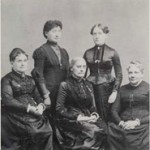Search Results
-
Housing Affordability Confusion
From the NY Times yesterday, comes a surprisingly confused article arguing that home ownership has actually gotten less expensive over the last 20 years. Here’s the article’s upshot (and the part that contains the fishy reasoning): Nationwide, a family earning the median income – the exact middle of all incomes – would have to spend 22 percent of its pretax pay this year on mortgage payments to buy the median-priced...Read more » -
Make Room!
The good ship Cascadia has another 227,000 passengers. The US Census Bureau has issued population estimates for the states, which allow us to give an updated Cascadian population tally. As of July 1, 2005, the region—counting British Columbia, Idaho, Oregon, and Washington—had 15.6 million people. (Adding western Montana, southeast Alaska, and northwestern California pushes that figure up by another million or so, but running the county-by-county figures takes more time...Read more » -
All I Want for Christmas is a Sidewalk
It’s the most dangerous time of year to be a pedestrian or a bicyclist: short days mean commutes in the dark, overcast weather obscures pedestrians even during daylight, and rain and snow increase the stopping distance for both drivers and cyclists. But as the Seattle Times reports, better infrastructure, such as in Washington’s recently updated wish list of pedestrian and cyclist projects, can make walking and biking both safer and...Read more » -
Young at Heart
I’m not sure what to make of this, but it’s interesting anyway: Young and Restless in a Knowledge Economy (pdf document), a report on how different urban areas around the US have fared in attracting new residents who are young and well educated. Now, the report’s author clearly believes that attracting talented and entrepeneurial 25-to-34 year olds is a key determinant of a city’s economic vitality—a perspective that I’m not...Read more » -
Of Green Mayors and Red Queens
Not much new here, really, but still worth noting: from the Seattle P-I, "Seattle sets own Kyoto goals for emissions." To me, the thing that’s most noteworthy is the admission that, if greenhouse gas emissions are really going to fall in a city like Seattle, a lot of the reduction will have to come from the transportation sector. Seattle’s electricity is already, at least nominally, climate-neutral. Some gains can probably...Read more » -
Slow-motion Revolution
What makes the impossible become inevitable? Sightline executive director Alan Durning sets the campaign for a sustainable economy and way of life beside similarly ambitious causes of the past, such as emancipation and suffrage, and finds reasons for optimism.Read more » -
Proposal to Legalize Granny Flats in SE Seattle
Good news on the smart-growth front: Seattle’s mayor is working on a pilot program to legalize granny flats in southeast Seattle. Currently residents of single-family neighborhoods can’t rent out extra space they may have in "detached accessory dwelling units", such as an apartment above their garage, although basement apartments are legal. Granny flats provide a variety of benefits. They increase density, supporting better transit and more services for the neighborhood....Read more » -
Streetcars Are History
An interesting bit of local history in the Seattle P-I. By 1892 Seattle was crisscrossed with 48 miles of electric railway and 22 miles of cable railway, stretching from Georgetown to Ballard. According to state historian Walter Crowley, the construction of the streetcar routes segued into smart new development: …developers platted new neighborhoods clustered around compact business districts at street railway intersections, built broad avenues such as Westlake, Madison and...Read more » -
Dreaming of Curitiba
This Bill McKibben piece on Curitiba, Brazil—which has been held up for years as an international model of people-friendly urban design—may seem like old news to those who are in planning or transportation circles. But I still found it inspiring. If Curitiba—with a per capita income of $2500 a person, 300 percent population growth since 1970, and no lush beaches or obvious tourist attractions—can make its city a model of...Read more » -
They’ve Got A Bridge To Sell You
(This post is part of a series.) Noted in passing, a Seattle Times article with a mildly galling headline: Rebuild or replace the viaduct? So, what then, are those the only two options on the table? Obviously, no. But it’s hard to know that from the Times’ coverage. The article highlights the musings of a retired structural engineer and I-912 supporter who claims that the Viaduct could be patched up...Read more »


